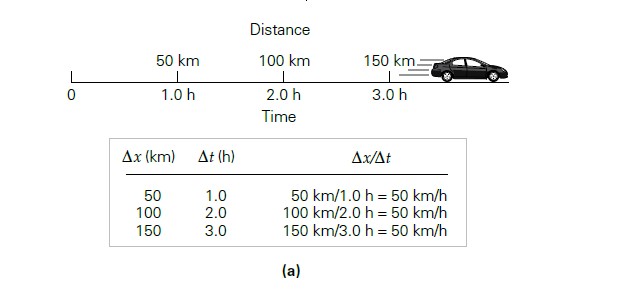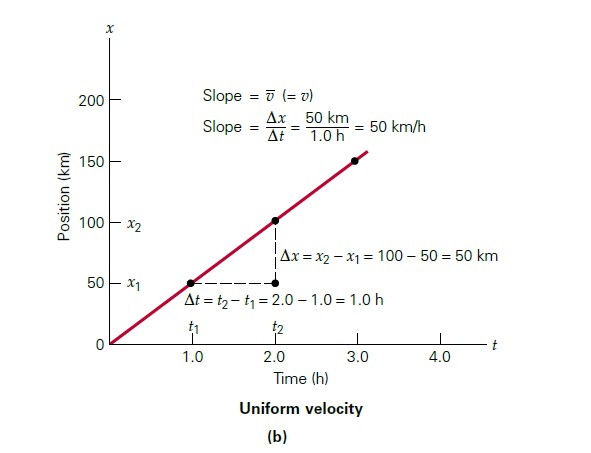Uniform Motion | Uniform Linear Motion
Uniform motion or Uniform Linear Motion means motion with a constant or uniform velocity (constant magnitude and constant direction).
As a one-dimensional example of this, the car in Figure 1 has a uniform velocity.
– It travels the same distance in the same direction and experiences the same displacement in equal time intervals (50 km each hour) and the direction of its motion does not change.
– Hence, the magnitudes of the average velocity and instantaneous velocity are equal in this case. The average of a constant is equal to that constant.
In uniform linear motion, an object travels at a constant velocity, covering the same distance in the same direction during equal time intervals.
(a) Here, a car travels 50 km in the same direction each hour.
(b) An x-versus-t plot is a straight line since equal distances are covered in equal times.


The numerical value of the slope of the line is equal to the magnitude of the velocity, and the sign of the slope gives its direction. The average velocity equals the instantaneous velocity in this case.
